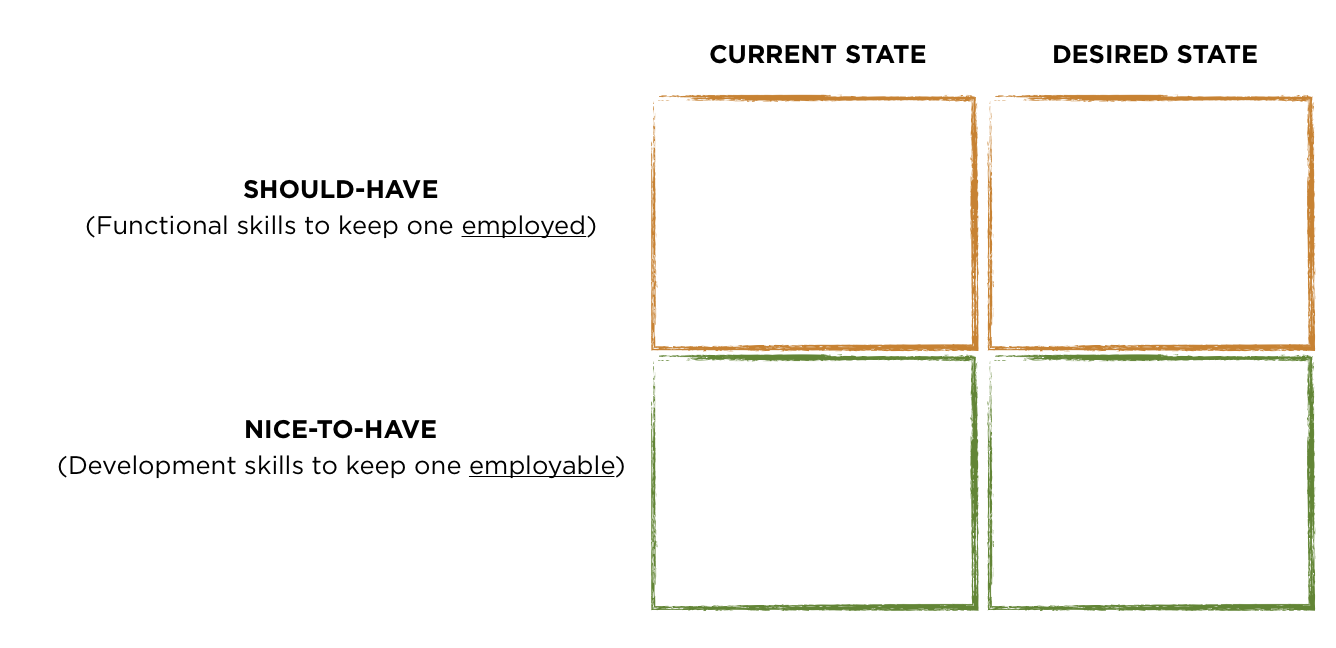I’ve heard people talk about their career aspirations, but what puzzles me is when I ask about how they’re getting there, what I get are vague responses such as,
“oh you know…I’m going to perhaps take a course next time…”
“hmmm……. I’ll think about it when there’s a need.”
“I’ve already got so much on my plate; there’s no spare time for development!”
Sadly, the truth in many organisations is that managers and employees alike do see development planning as a paper exercise that doesn’t bring much value in reality. Usually done after an appraisal, it seems more like post-movie credits rather than the main storyline, when it really should be the focus of attention!
During the appraisal, some employees might go on defence mode when they perceive that they deserve a better rating, and they’ll try to justify their efforts in the past year. A reality check: appraisals are for the past performance period. Nothing that you say or do can unwind time or allow you to redo the year. Therefore, doesn’t it make sense to move forward and focus on adding value to the future?
For this reason, I’ve encouraged leaders that I coach, to spend the bulk of the appraisal session to discuss and work on a concrete development plan.
Why does development planning make good business sense? How can I steer employees in the direction of development planning? How can a development plan be meaningful and actionable?
Why development planning makes good business sense?
-
People care if you take a genuine interest in their future
-
It helps builds loyalty, and loyalty increases productivity
-
Good talented people naturally want to advance, and appreciate meaningful support in the process
-
Development planning does not have to be elaborate or costly
The above reasons are for leaders who need to be convinced to prioritise development. Leaders also have accountability to ensure that individual development plans (IDP) of those in their team, link back to organisational goals. When individuals see how their effort and performance contributes to the attainment of organisational goals, they’re more likely to be invested and committed.
Here are more benefits to sound development planning. When done effectively, it will:
-
Upgrade skills
-
Boost confidence
-
Enhance knowledge
-
Promote willingness to take on new things
-
Engage and motivate employees
-
Build trust
Food for thought: What can I do to ensure that my employees can link their IDP to organisational goals? How can I communicate these developmental benefits to my employees?
How to have a meaningful development conversation?
Development shouldn’t be an indiscriminate activity that generates random skills, but a focused approach that connects each employee’s talents and skills with the organisation’s vision and values.
With this objective in mind, the framework here should help to scope your development conversations better.

Should-have skills are what your employee is hired for. You can ask yourself: what would make this person really valuable? This would be the desired state for your employee’s role. From there, it might be easier to assess the current gaps.
Nice-to-have skills will keep one employable amidst the changing job landscape. Consider the transferable skills that your employee will need given the demands of your industry and organisation, and also research that’s already been done on future-ready skills.
Employees should already have a good sense of their competency and knowledge gaps if they've appraised themselves accurately, and that can be baseline information to begin with. This template can also be sent to them ahead of a development conversation, so their thoughts are directed towards a specific outcome they can see on paper.
Other than the quadrant, you can facilitate the discussion with questions such as:
-
What are your strengths and talents?
-
What are development opportunities you see provided by the organisation?
-
What are possible development actions you can take?
-
What role/position do you aspire to take on in a year’s time?
For an alternative approach, download this ready-to-print development gap analysis tool!
Food for thought: What other questions have my own managers used to provoke me into deeper thinking about my IDP? How can I adapt these questions for my own team?
Troubleshooting approaches
Different individuals have their own needs and ideas in development planning. Here are some scenarios I’ve heard about:
-
Employees who don’t know what they need to develop in their current role
-
Employees who want to take career development step to be promoted, but are unsure of the development actions needed
-
Employees with too many development actions for the year
-
Employees whose development actions aren’t aligned with areas of improvement, or to the organisation’s goals
-
Employees who aren’t motivated to develop himself/herself
Considering your employees’ needs ahead will help you be prepared for their responses as well. Do you know them well enough to know what motivates each individual? The reality of the workplace is that no one can remain stagnant in their skills, and the resulting challenge is communicating this fact to your team.
Food for thought: Where do my employees fit in? What are the different approaches I can think of in advance for each of the above scenarios?
Development planning invariably leads to conversations about learning culture. Organisations that cultivate and sustain a learning culture tend to attract, hire, and retain employees that are proactive with their development efforts too.
What’s your learning culture like today? What can you do about it?


